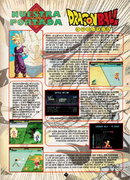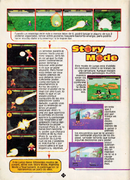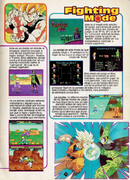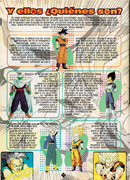Dragon Ball Z: Super Butōden 2: Difference between revisions
Created page with "{{Infobox |image = 116457-dragon-ball-z-super-butoden-2-snes-front-cover.jpg |developer = d&d Corp., Tose Co., Ltd. |publisher = Bandai Co., Ltd. |platforms = SNES |date..." |
MorticianBot (talk | contribs) m Bot: Changing template: Infobox |
||
| (3 intermediate revisions by 2 users not shown) | |||
| Line 1: | Line 1: | ||
{{ | {{InfoboxGame | ||
|image = 116457-dragon-ball-z-super-butoden-2-snes-front-cover.jpg | |image = 116457-dragon-ball-z-super-butoden-2-snes-front-cover.jpg | ||
|developer = d&d Corp., Tose Co., Ltd. | |developer = d&d Corp., Tose Co., Ltd. | ||
| Line 6: | Line 6: | ||
|date = December 17, 1993 | |date = December 17, 1993 | ||
|wikipedia = https://en.wikipedia.org/wiki/Dragon_Ball_Z:_Super_But%C5%8Dden_2 | |wikipedia = https://en.wikipedia.org/wiki/Dragon_Ball_Z:_Super_But%C5%8Dden_2 | ||
|mobygames = https://www.mobygames.com/game/dragon-ball-z-super-butden-2 | |mobygames = https://www.mobygames.com/game/dragon-ball-z-super-butden-2}} | ||
}} | |||
'''Dragon Ball Z: Super | '''Dragon Ball Z: Super Butōden 2''' (released as '''Dragon Ball Z: La Légende Saien''' in France) is the second Dragon Ball Z fighting game for the Super Famicom. The game contains characters from the Cell Games story arc, plus the Dragon Ball Z: Broly – The Legendary Super Saiyan and Dragon Ball Z: Bojack Unbound films. | ||
== Unreleased English Localization == | == Unreleased English Localization == | ||
The game was the cover story in Club Nintendo Mexico Year 5 #3 (March 1996), and it showed multiple pictures of a still work-in-progress English localization. The magazine claimed that Bandai had agreed to have the game distributed in Mexico through the official distributor (Itochu, headed by Teruhide Kikuchi), but the game was never released. A fourth page included info about the main characters, since neither the manga nor any episodes of the animated show featuring the characters had been aired in the country at that point. | The game was the cover story in Club Nintendo Mexico Year 5 #3 (March 1996), and it showed multiple pictures of a still work-in-progress English localization. The magazine claimed that Bandai had agreed to have the game distributed in Mexico through the official distributor (Itochu, headed by Teruhide Kikuchi), but the game was never released. A fourth page included info about the main characters, since neither the manga nor any episodes of the animated show featuring the characters had been aired in the country at that point. | ||
The magazine also showed a photo of the title screen, and the game was simply called '''Dragon Ball'''. The logo was a modified version of the one used in some Western publications, with the letters rearranged a bit, and lacking the iconic Dragon. | |||
<gallery widths="180px" heights="180px"> | <gallery widths="180px" heights="180px"> | ||
| Line 21: | Line 22: | ||
Club Nintendo Ano 05 No 03 (Mexico) Ver.2 pg14.png|Club Nintendo Mexico (March 1996) | Club Nintendo Ano 05 No 03 (Mexico) Ver.2 pg14.png|Club Nintendo Mexico (March 1996) | ||
</gallery> | </gallery> | ||
[[Category:Game]] | |||
Latest revision as of 13:48, 5 September 2024
Dragon Ball Z: Super Butōden 2 (released as Dragon Ball Z: La Légende Saien in France) is the second Dragon Ball Z fighting game for the Super Famicom. The game contains characters from the Cell Games story arc, plus the Dragon Ball Z: Broly – The Legendary Super Saiyan and Dragon Ball Z: Bojack Unbound films.
Unreleased English Localization
The game was the cover story in Club Nintendo Mexico Year 5 #3 (March 1996), and it showed multiple pictures of a still work-in-progress English localization. The magazine claimed that Bandai had agreed to have the game distributed in Mexico through the official distributor (Itochu, headed by Teruhide Kikuchi), but the game was never released. A fourth page included info about the main characters, since neither the manga nor any episodes of the animated show featuring the characters had been aired in the country at that point.
The magazine also showed a photo of the title screen, and the game was simply called Dragon Ball. The logo was a modified version of the one used in some Western publications, with the letters rearranged a bit, and lacking the iconic Dragon.
-
Club Nintendo Mexico (March 1996)
-
Club Nintendo Mexico (March 1996)
-
Club Nintendo Mexico (March 1996)
-
Club Nintendo Mexico (March 1996)



